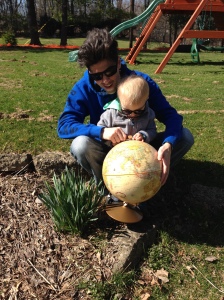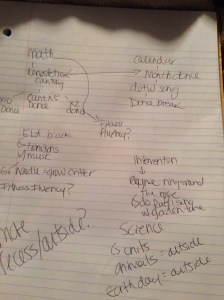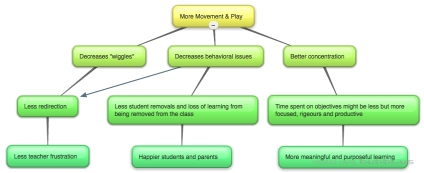When I began this class I was worried I would be in over my head. I understood that it had to do with design and was worried I would really struggle with the concepts. Design sounded so daunting to me. However, upon reading about design in “Bootcamp Bootleg”, especially the section about empathy, I became much more comfortable with the idea of design in relation to my work. In fact, upon examining “good” and “bad” designs, I realized that I design quite frequently and became much more interested and excited about the class.
The biggest take away I have from this class is that good design starts with empathy. I consider myself an empathetic person and really identified with this concept. One of the examples which struck me was the patients in hospitals looking up at a blank, dreary ceiling and when nurses noticed this they started painting pretty designs on the wall or had visitors create items that could be hung on the wall to cheer up the patient. I loved that, because it was so simple, but still made a difference. This seemingly little design inspired my problem of practice. To many adults, playtime and movement for students doesn’t seem important, because they don’t remember the energy they once had flowing through their bodies like raging electric currents. They can not empathize with young students and their desire to run, play, sing, dance, and scream, whereas, I can. I can still recall sitting in my seat as a young student feeling like my legs were going to have jets of energy shoot out of them if I didn’t get out to run. I also remember having many more opportunities to run and play than my students have in my classroom. School was not too rigid and obsessed with “every minute matters”. This difference between the memory of my own educational experience and that of my students made my problem of practice easy to decide.
I knew that I had to incorporate learning objectives within my designs as much as possible and fretted over what to do. Upon reading the prototype article and watching the prototype video I realized that I was making the solution too hard. That is when I began considering simple movement based activities. I already had a few which I had always incorporated in my class because they were fun and helped my students learn. I realized that I needed to implement similar ideas to other objectives. With this in mind I was able to come up with a variety of activities from my own “rhyme around the rosie” activity to video based activities that helped students practice various learning objectives like counting by fives. In just a short time I could see my students growing in their understanding of different objectives and they would tell me how they enjoyed the activities, which made me very happy. I also found that my students were less likely to be disruptive when I implemented these activities.
The first activity I implemented was my “rhyme around the rosie”. I had extra time during a rhyming lesson and, remembering that prototyping does not need to be overcomplicated, I created this simple activity. I had students stand in a circle and put one student in the middle. We sang “Rhyming, rhyming, this is how we rhyme today. In the morning, in the morning. Rhyming, rhyming, can you rhyme with: fan?” (the final word being the one I would change each time). The middle student would then pick a classmate from the circle to provide a word that rhymed with the one I had provided, if they were correct they went to the middle of the circle. It was a huge success to the point that I even saw students practicing this activity as a game at recess. I then started to try gonoodle.com and “Have Fun Teaching” videos. These videos provide specific movements for students to do so that they stay, in best case scenarios, in control of their bodies. I found videos that helped them practice counting by fives and tens and a variety of other videos that were “dance breaks” which I used to meet our objective of using self control with our bodies. This past week I finally received the “Fluency and Fitness” bundle we had purchased and tried it out. I used the ten frame set in which students are flashed different numbers on a ten frame and they then have to recognize and say the number. Every few slides they have a physical activity, like jumping jacks, and they do five to ten, depending on what direction I give. I have only tried this three times, but am hopeful that it will be as beneficial as the other activities I have tried previously. The bundle covers both ELA and math objectives. Focusing on and creating other ways in which I can incorporate movement in my teaching is very fulfilling to me . One simple adjustment that I made to a typical activity working on identifying was where students hear certain sounds in words they are directed to either stand up or sit down. For example, if we are listening for letter “b”, they stand up if they hear it at the beginning of the word and sit down if they hear it at the end. Students seem to enjoy this and it also gets them moving. Simple things like this can make a lesson much more engaging and enjoyable for the students. I also find that they are even more engaged if I do the activities with them. I am excited to keep trying to explore ways to incorporate movement in my lessons.
I never would have considered myself a designer before, I always correlated the term designers with brilliant people like engineers or really creative people like artists. Now, I realize anyone can be a designer to make the world a better place in one small way. Whether it is constructing a way to make learning fun or developing a product that is less wasteful, there are so many ways people can be designers if they remember to think empathetically.



